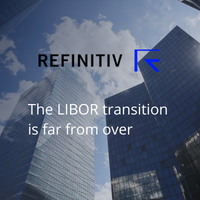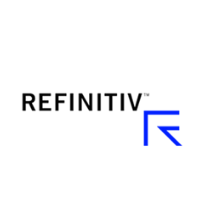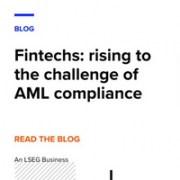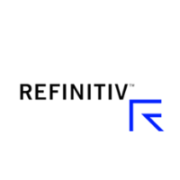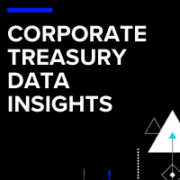The LIBOR transition is far from over
05-04-2022 | treasuryXL | Refinitiv | LinkedIn |
In December 2021, LIBOR setting publication ceased on over two dozen settings. But the transition is far from over as phasing out continues for legacy contracts.
- As of the end of last year, 24 LIBOR settings have ceased publication.
- The FCA confirmed Synthetic LIBOR to be allowed for the temporary use of “synthetic” sterling and yen 1M, 3M and 6M LIBOR rates in all legacy LIBOR contracts.
- The main challenge that remains is the USD LIBOR Transition
For more data-driven insights in your Inbox, subscribe to the Refinitiv Perspectives weekly newsletter.
Since the end of 2021, publication of 24 LIBOR settings has stopped (CHF, EUR, GBP, USD and JPY) and the most used GBP and JPY LIBORS are now being published with a new methodology called “synthetic LIBOR”.
USD LIBORs will continue to be published until mid-2023 using panel bank submissions. Discussions surrounding Euribor are ongoing, but EU regulators appear to be waiting until the LIBOR cessation has fully taken place to define a more detailed agenda for Euribor.
To sum it up – the LIBOR transition is not yet over!
Refinitiv Eikon gives you the information you need – whenever and however you want it
What is Synthetic LIBOR?
On 16 November 2021, the FCA confirmed Synthetic LIBOR to be allowed for the temporary use of “synthetic” sterling and yen 1M, 3M and 6M LIBOR rates in all legacy LIBOR contracts.
This applied to all other than cleared derivatives, that have not been changed at or before 31 December 2021.
The Synthetic LIBOR are published on existing Refinitiv Instrument Codes (RICS), as shown in Figure 1.

Synthetic LIBOR methodology
Synthetic LIBOR = ISDA Median Spread + Term Rate.
For example, the JPY 3M Synthetic LIBOR value published on JPY3MFSR= RIC is calculated as per below:
JPY3MFSR=; -0.00020630 = JPY 3M ISDA IBOR Spread (JPY3MFSRS=ISDA ; 0.0000835) + [JPY 3M term rate (JPYTRR3M=QCKJ ; -0.0002938) x (360/365) ; -0.000289775]
*Please note that Refinitiv is an authorised distributor of ISDA spreads. You can find ISDA fallbacks and Term Rates in the Refinitiv Eikon IBOR App.


USD LIBOR challenges
The main challenge that remains is the USD LIBOR transition. Even with the cessation set to 30 June 2023, market participants have been asked to implement transition and identify fallbacks by regulators.
Even if the use of USD LIBORs has been discouraged and drastically limited for new contracts, data from DTCC and ISDA suggests that LIBOR contracts were traded in January 2022 but in low volumes.
The FCA defined clearly the stipulations in Further Provision and Information in relation to the Prohibition and the Exceptions:
- The market-making exception applies only where market-making is undertaken in response to a request by a client seeking to reduce or hedge their USD LIBOR exposure on contracts entered before 1 January 2022.
- The prohibition does not prohibit new single currency USD LIBOR basis swaps entered in the interdealer broker market.
The lack of credit component in SOFR appears to raise some issues, mostly from regional banks, that also stressed the fact that borrowers will struggle with SOFR. LIBOR is a forward-looking term rate and interests are known upfront, with SOFR and other alternative Risk-Free Rates (RFR), interest is compounded and only known at the end of the period.
*Please note that credit-sensitive rates such as Ameribor, AXI or BSBY are available in Refinitiv Eikon but are NOT endorsed by the ARCC or FCA.
On the cash market, the Alternative Reference Rates Committee (ARRC) Progress Report, published on 31 March 2021, estimated there will be approximately $5trn USD LIBOR referencing contracts in business loans, consumer loans, bonds and securitisations maturing after June 2023.
Many of these exposures may have suitable fallback language and will be able to transition away from LIBOR prior to cessation.
ARRC has selected Refinitiv to publish its recommended spread adjustments and spread adjusted rates for cash products. The USD IBOR Cash Fallbacks provide market participants, including lenders and borrowers, with an industry-standard agreed rate, which can clearly and easily be referenced in contracts.
Refinitiv launched USD IBOR Consumer Cash Fallbacks 1-week and 2-month settings on 3 January 2022.

Update on derivatives
As mentioned in the December 2021 Bank of England Risk-Free Rate Working group newsletter, the transition towards Risk-Free Rates is progressing steadily, as per the charts in Figure 5 for cleared swaps and exchange-traded futures:

In a Risk.net article, Philip Whitehurst, Head of Service Development, Rates at LCH (part of LEG Group) said: “Sterling LIBOR was the most substantial population LCH had converted, amounting to about 185,000 trades for around $15trn worth of cleared swaps. They were converted into Sterling Overnight Index Average (SONIA) equivalents on a compensated basis.
“The same was applicable for around 75,000 yen LIBOR trades, with aggregate notional of about $4.5trn, and 25,000 to 30,000 Swiss LIBOR trades worth about $1.5trn, as well as a very small population of euro LIBOR trades.”
Whitehurst stressed that Euribor trades were not converted.
On the OTC Derivatives markets, the adoption of new Risk-Free Rates is very high.
GBP, CHF and JPY swaps are now exclusively done on new Risk-Free Rates. SOFR swaps are progressing versus LIBOR, at a quite slow pace, and now represent close to 50 percent of the traded notionals, according to ISDA swaps info figures.
Unsurprisingly, the exception remains EUR, where fewer than 30 percent of the traded notionals are on €STR.
Cross-currency swap markets are rapidly ditching legacy interest rate benchmarks in favour of RFRs.
Since the beginning of 2022, trades in euro/dollar cross-currency OTC swaps have almost exclusively referenced the secured overnight financing rate (SOFR) and the euro short-term rate (€STR).
DTCC data repositories from U.S. markets data show how 95 percent of USD / GBP, USD / JPY and USD / CHF now trade RFR versus RFR.
The transition has been pushed by RFR First initiatives, the second phase of SOFR First, launched in September 2021. It stated that interdealer trading conventions for cross-currency basis swaps between USD, JPY, GBP, and CHF LIBORs will move to each currency’s risk-free rates.
Cross-currency swaps prices can be found in Refinitiv Eikon, using the OTC advanced search tool, the OTC Pricer App and the Swap Pricer app, which now allow price cross-currency swaps based on new RFRs.


Not the end of the LIBOR transition
Although 24 LIBOR settings have already been discontinued, this does not spell the end of the LIBOR transition.
Market participants are still actively transitioning away from LIBOR trades in USD, while getting prepared for other IBORs transitions in the Eurozone and the rest of the world.
Refinitiv Eikon gives you the information you need – whenever and however you want it

